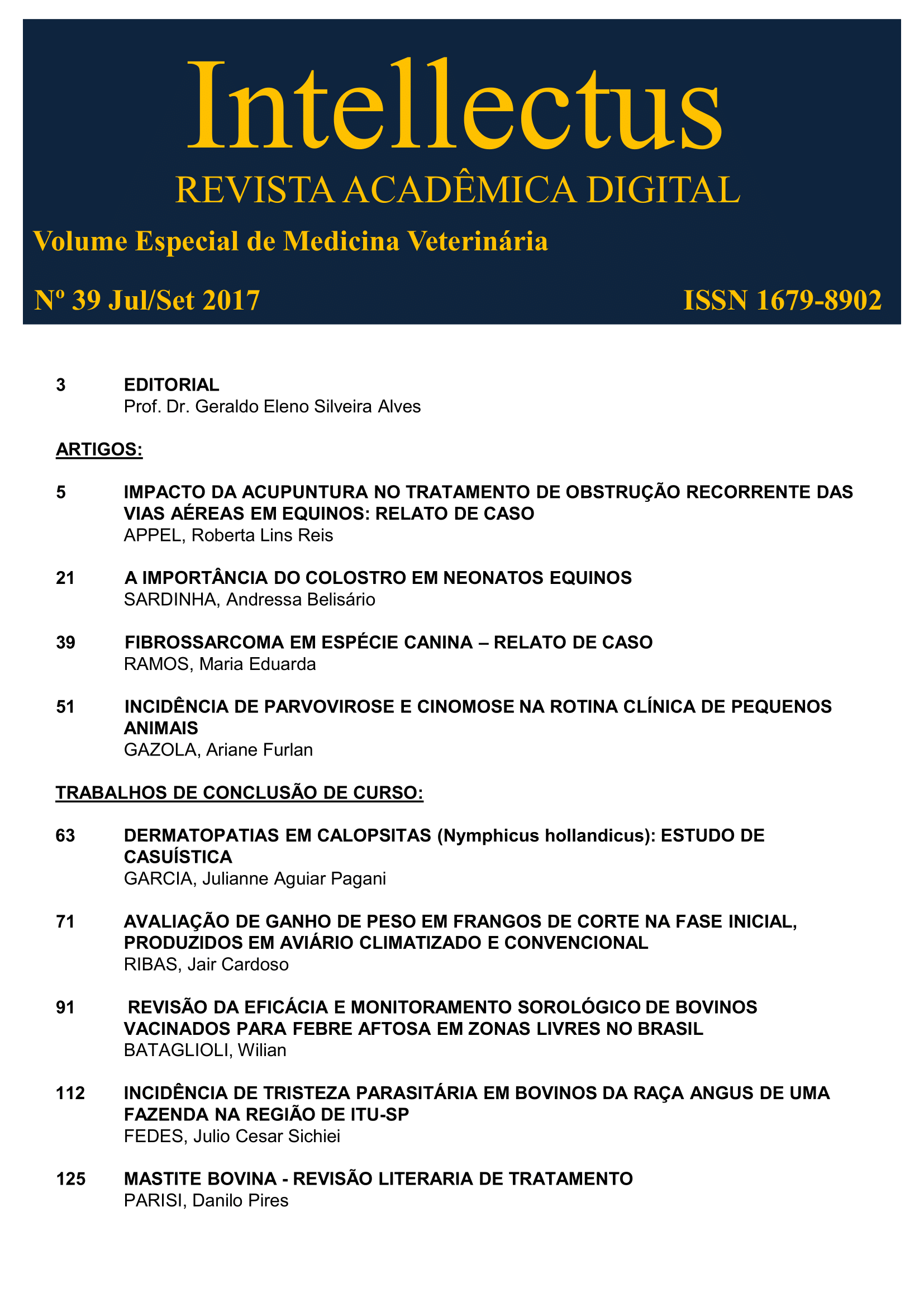Equine infectious anemia
literature review
Keywords:
virus, hematophagous insects, AGID testAbstract
Equine Infectious Anemia (EIA) is an infectious contagious disease caused by a virus of the family Retroviridae, genus Lentivirus, and the horses are more susceptible, in relation to the donkeys and mules. It is a disease that has no cure, once the infected animal, becomes permanent carrier, and may or may not show signs of disease, becoming a source of infection. Periodic episodes of fever, jaundice, depression, hemolytic anemia, edema and weight loss are hallmarks. Transmission occurs mainly through the blood of an infected animal through the bite of hematophagous insects, occurring most frequently in the hottest times of the year and in wet and marshy regions, or through fomites. In Brazil, positive animals in the AGID test should be sacrificed, as established by the National Equine Health Program of the Ministry of Agriculture, in addition to being a compulsory notification disease, occurring in all Brazilian states, of extreme importance in the Sanitary and economic aspect due to the embarrassment of the traffic of equidae, besides interfering in the equestrian sporting events, thus assuming a considerable economic relevance, being of extreme importance an adequate prevention.



